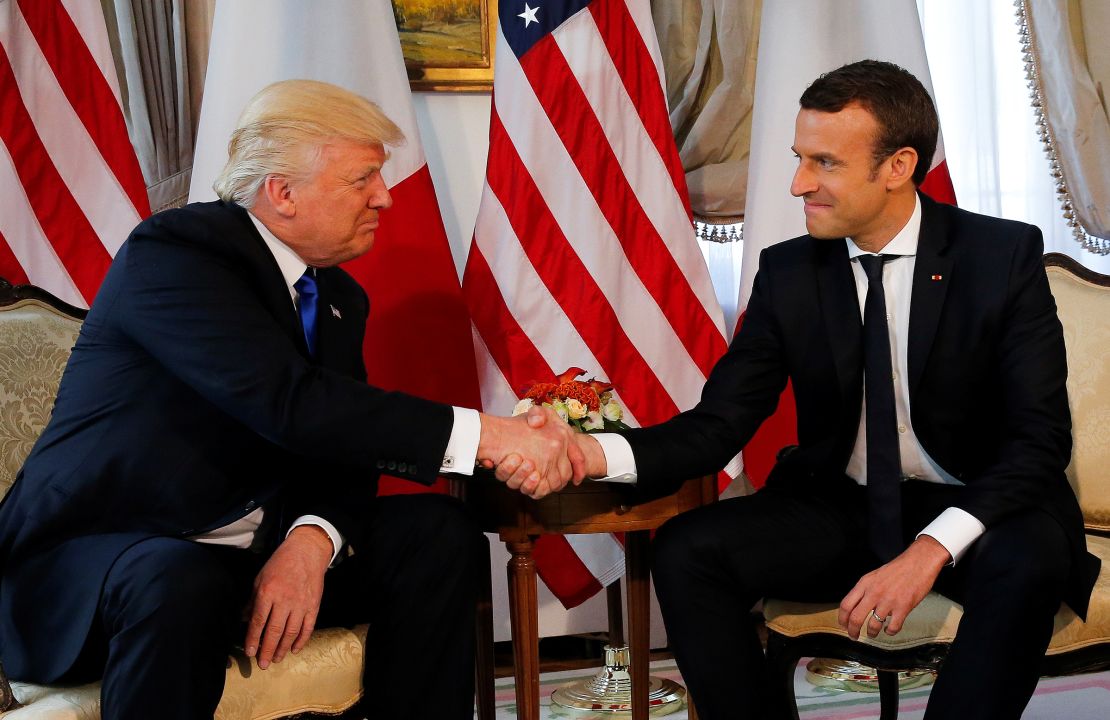PARIS
CNN
—
Foreign leaders’ visits to the White House used to be occasions for face-to-face diplomacy, allied backslapping and polite photo ops.
But President Donald Trump’s public pillorying of Ukraine President Volodymyr Zelensky in February has upended Oval Office norms, sparking panic among some foreign leaders.
“You’re not acting all that thankful,” Trump scolded Zelensky, with Vice President JD Vance piling on in front of the international press.
As the Ukraine leader pushed for more help in the country’s war with Russia, Trump at one point threatened to give up on Ukraine entirely, the meeting devolving into little more than a shouting match.
Foreign dignitaries took that visit – as well as Trump’s unfounded accusations of genocide against South African President Cyril Ramaphosa and tense exchanges with Canada’s Prime Minister Mark Carney – as a sign that Oval Office visits in Trump’s second term called for a different type of preparation.
Five former senior diplomats who have handled preparations for these types of meetings likened Trump’s White House to a boxing ring or a TV set.
The dignitaries said leaders should now mentally prepare for diplomatic “jiu jitsu,” trolling or even “North Korean” style adulation. And never, ever say Trump is wrong in front of a camera.
“You never contradict Trump publicly, because he will lose face and that’s something that he can’t accept,” said Gérard Araud, who was France’s ambassador to the US during Trump’s first presidency.
There are signs ahead of Israeli Prime Minister Benjamin Netanyahu’s planned White House visit Monday that even he is looking to avoid any chance of a fight, despite his close relationship with Trump. After Trump said Tuesday that he planned to be “very firm” with Netanyahu on the need for a ceasefire in Gaza, an Israeli official indicated they accepted the terms of a 60-day ceasefire proposal about 24 hours later.
For Lithuania’s former foreign minister, Gabrielius Landsbergis, Oval Office visits from foreign leaders are “chances for Trump to portray himself as this alpha leader, you know, pushing aside others and belittling others,” he told CNN. “This is a show.”
Trump himself indicated the last point as his meeting with Zelensky ended, quipping: “This is going to be great television.”
Arturo Sarukhán, Mexico’s former ambassador to Washington, described the meetings as “diplomatic vandalism and trolling.”
Foreign dignitaries say Trump 2.0 is at a different level even compared to his first term. In 2017 he was, “learning the ropes of government. And I think he was learning the boundaries of his power,” said Joe Hockey, former Australian ambassador to the US.
Ex-French envoy Araud said that Trump in 2017 was “insecure, he didn’t know the job. He hated to be patronized.”
Trump has also acknowledged that he’s much more confident in exercising his powers the second time around – and he’s made it clear he’s less concerned about potential limitations or criticisms.
The returned president is “far more overtly transactional,” Hockey said, as well as “a far more formidable negotiator.” Since January, allies and foes alike have been subjected to unprecedented tariffs and the ignominy of placating Trump for preferable trade terms.
And it’s rattled some leaders, according to Araud: “European leaders especially are in a sort of denial. They are panicking.”
Glitzed out in gold details, the Oval Office exudes Trump, its walls reflecting his particular vision of US history. His office is as much showplace as workplace.
That’s not the only way the office has changed.

Unlike the bureaucratic machine of past presidencies, the Trump White House functions more like a royal family or a king’s court, Araud said. Without “personal access” to Trump or his close family, leaders won’t make much progress on requests. And even if heads of state do get that one-on-one time, “it doesn’t mean you’re going to influence the guy.”
During past administrations, “there were rules,” Araud added. Meetings at the White House, which typically involve months of planning, were seen as a unique opportunity for foreign leaders to meet with the US president – and be seen doing so.
“You were supposed to respect some basic decency,” he said.
Such visits were “about treating foreign leaders with dignity and respect and, frankly, making sure that these visits are a win-win for both sides,” Rufus Gifford, who was the US ambassador to Denmark until 2017 and chief of diplomatic protocol under former President Joe Biden, told CNN. As chief of protocol, Gifford was responsible for coordinating meetings between the US president and foreign leaders.
“Our advice, very simply, was take advantage of the very few moments that you have,” Gifford added. “This should be a nice meeting where you get to know each other as human beings.”
Sarukhán, one of Mexico’s ambassadors to the US during the Bush and Obama presidencies, said that his team would provide icebreakers and areas of shared interest to their president ahead of a visit — anything to lubricate the wheels of diplomacy.
Famously, Mexican President Vicente Fox visited former President George W. Bush’s Texas ranch for one of their meetings, after Bush came to Fox’s ranch in Mexico years earlier. Sarukhán described pictures from the visits as “visual gold,” adding they were the product of long discussions between both president’s teams.

And ahead of former President Barack Obama’s inauguration, Sarukhán recalled the Mexican embassy put on a special exhibition of jewels of Mexican art in DC, where the Obamas could meet Mexico’s then-President Felipe Caldéron.
“It was an Olympic goal, to use a soccer term,” Sarukhán said.
“Think in terms of television” is how Landsbergis advised preparing for a meeting with the former reality TV star president.
He said that world leaders also have their home audience’s public perception in mind. Pushing back or even fact checking Trump may be risky, but it isn’t necessarily a losing strategy, Landsbergis said. Similarly, Sarukhán said it can be advantageous for leaders to show they can handle some “jiu jitsu” with the US president.
“They should not have an expectation that it’s going to go smoothly,” said Gifford, the Biden White House official who also worked on Kamala Harris’ campaign. “Donald Trump thrives on keeping these foreign leaders off balance.”
Sometimes, that manifests in actual physicality — often involving aggressive handshakes. That presented a personal challenge for Araud when France’s Emmanuel Macron met with Trump for the first time in 2017.

“Beware. He is going to be brutal with your hand. Be ready to resist,” Araud warned.
He now counsels subordination.
“You should first be profusely grateful. You should really compliment the president. There is a sort of North Korean side in the White House,” he said. “And you should let Trump really talk and talk.”
“A phone call with Trump. It’s a minimum 45 minutes, and you have at least 40 minutes of Trump.”
Gifford warned against trying to insincerely charm Trump. “That works in the moment. It does not work long-term. And he will play you.”
“I don’t, in my mind, understand why foreign leaders keep coming to the Oval Office thinking that it’s the same as it has been. It’s just not,” Gifford told CNN, adding that Trump doesn’t value alliances as past US leaders have.
Despite the threat of an Apprentice-style ambush beamed live to the world, Landsbergis reckons the reward of an Oval Office visit outweighs the risk of a Trump smackdown.
It’s the “only chance” for a small country like Lithuania to transmit important messages or risk assessments — for example, about Russia’s aggression — directly to Trump.
But navigating the minefield of Oval Office barbs and fraught televized moments with Trump requires treating the most powerful man on earth like “a whimsical and unpredictable child,” Araud said.
“Trump’s the only one making decisions,” he added, “and he’s making decisions from the hip.”

